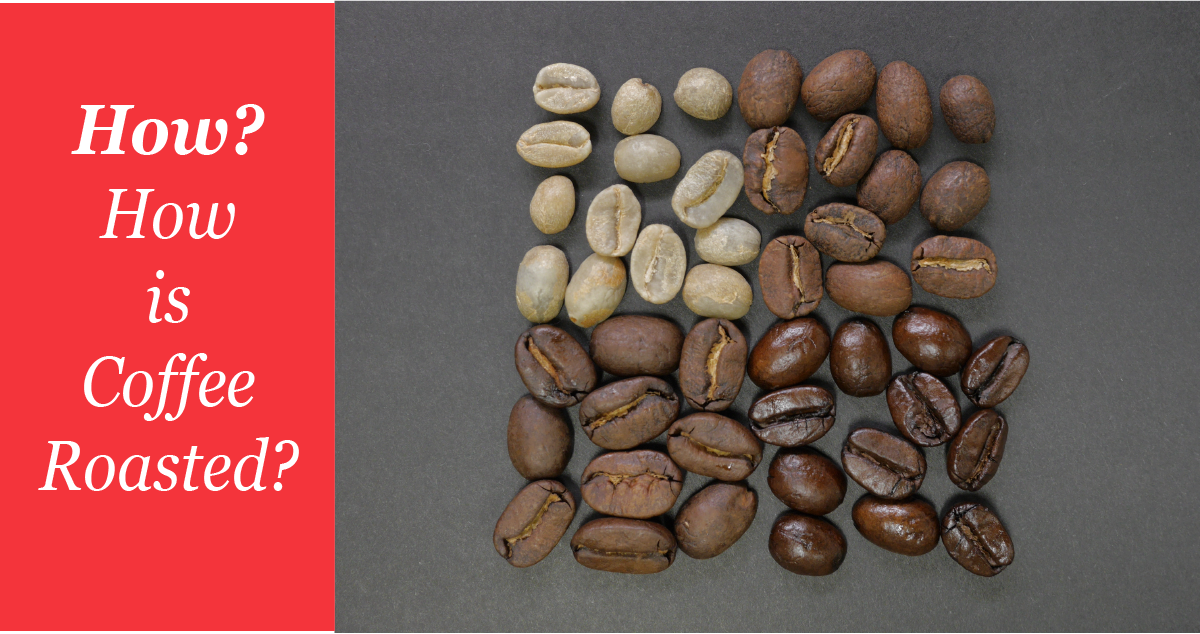
How is Coffee Roasted?
How coffee is roasted
Roasting the coffee beans is one of the biggest influences on the flavour of your coffee. Roasting takes the green coffee seed, which has almost no flavour beyond a quite unpleasant vegetable taste, and transforms it into an incredibly aromatic and complex coffee bean.
Methodology of roasting coffee
The application of heat to roast beans generally follows two methods. In slow roasting low heat is used to drive moisture from the beans until pyrolysis, or first crack, which normally occurs at from 400°F to 420°F (204°C to 216°C). Then the bean is finished to the desired roast level by increasing the heat. In fast roasting, high heat is applied early, searing the beans like a steak, then low heat after the first crack, as the beans should have a high enough internal temperature to finish by themselves.
A host of chemical reactions occur during roasting and several of them reduce the weight of the coffee, not least of them the evaporation of water. Slow roasting (14 – 20 minute) will result in a greater loss of weight than faster roasting, which can be achieved in as little as 90 seconds. Slow roasting is generally considered to achieve a better tasting coffee, allowing more scope for the complex aromatic compounds to develop to give coffee its flavour.
However, the speed and temperature of a roast is used by skilled roasters to determine three key aspects of how the coffee will taste: acidity, sweetness and bitterness. It is generally agreed that the longer coffee is roasted, the less acidity it will contain. Conversely, bitterness will slowly increase the longer the coffee is roasted, and will definitely increase the darker a coffee is roasted.
Commercial coffee roasting commonly uses two types of machine, drum roasters and hot-air or fluid bed roasters. Drum roasters are most popular with speciality roasters since they roast at slower speeds. A metal drum rotates above a flame, moving the beans constantly during the process to aid an even roast. Fluid-bed roasters tumble and heat the beans by pumping jets of hot air through the machine. Roast times are significantly shorter than a drum roaster.
All Spiller & Tait coffee is roasted in small batches (60kg or less) in a drum roaster. Roasting times vary between 14 to 16 minutes. Very few of our coffees are roasted dark, avoiding bitterness and protecting the inherent flavours in our coffee.



Leave a comment